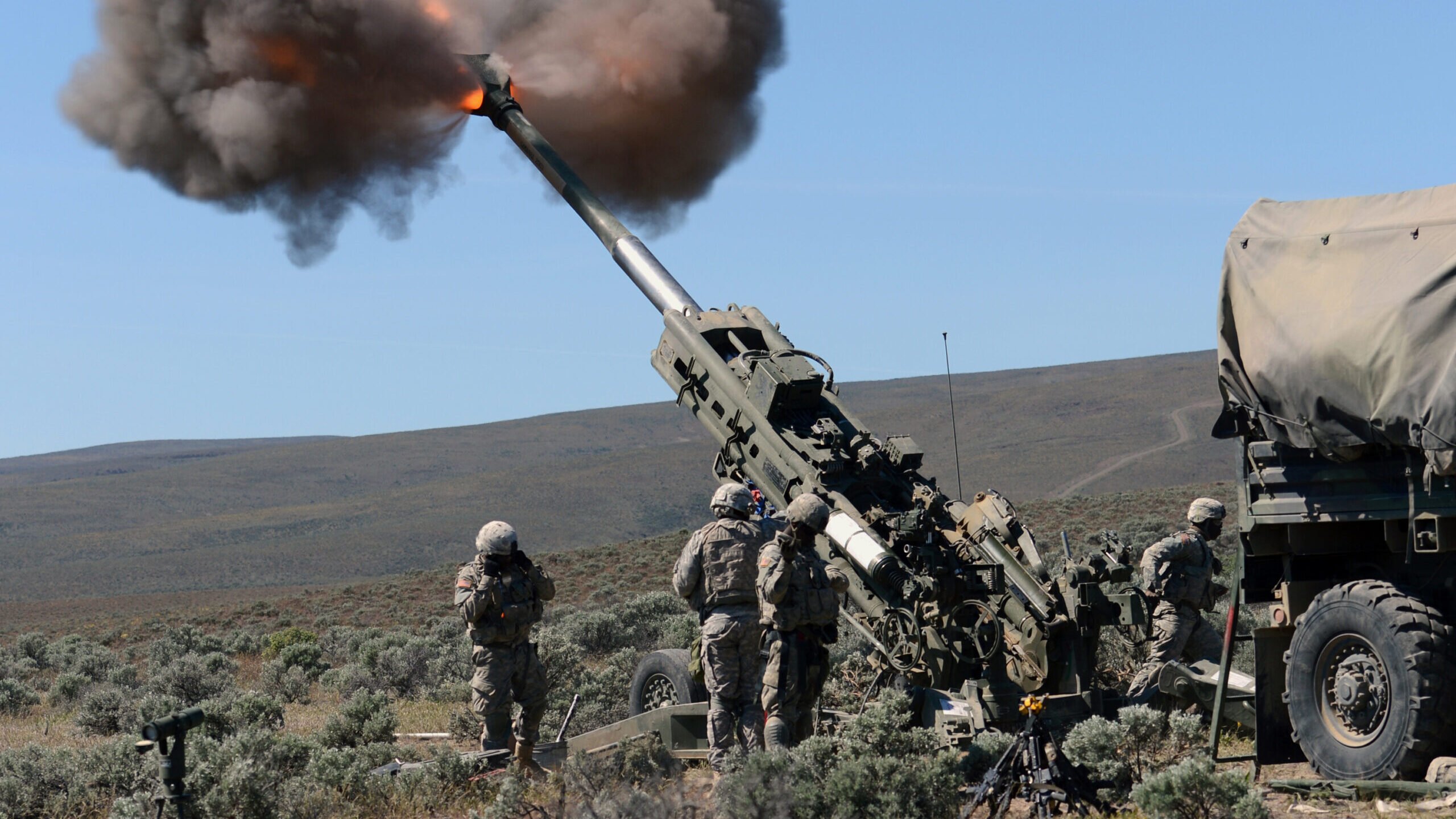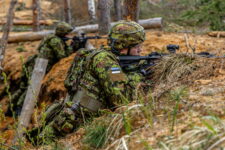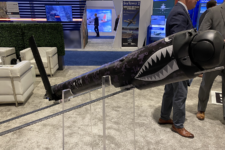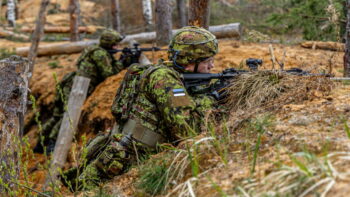
Army soldiers fire an M777 howitzer during a training exercise at Joint Base Lewis-McChord in Washington. (US Army/ Sidney Lee)
WASHINGTON – When the clock strikes midnight ushering in 2024, it does so with a new US Army chief in place honing in publicly on lethality, and several looming aviation and artillery decisions.
Army Chief Gen. Randy George will be just over three months into his official tenure as the service uniformed head when January 2024 kicks off, and the year could provide insights into his vow to focus on warfighting, from how it organizes to the weapons mix.
When it comes to sheer numbers though, those coming 12 months will continue testing the service’s ability to recruit new soldiers to fill its ranks. As of mid-December, the Army had not yet disclosed just how many recruits it’s aiming to bring in the door for fiscal 2024, but the past couple of years have proven challenging. For FY23, for example, the service met its end-strength of goal of 452,000 for active-duty soldiers thanks to stronger retention numbers. However, it was 10,000 recruits short of its 65,000 goal.
Army leaders, including George, have unveiled recruitment strategy changes that could begin bearing fruit in the new year, but they aren’t banking on a quick turnaround. Instead, they anticipated to unveil force structure cuts in 2024 that may include reducing the number of special forces, a group that has grown over the past two decades due to the ballooning of demand for counter-terrorism and anti-insurgent capabilities.
[This article is one of many in a series in which Breaking Defense reporters look back on the most significant (and entertaining) news stories of 2023 and look forward to what 2024 may hold.]
The coming year will also mean the return of the Army’s Project Convergence capstone demonstration with its sister services and foreign militaries. The 2024 event is expected to be filled with new foreign participants, weapons and technologies, and also include ballistic missile defense tests.
A trio of new longer range missiles could also be in soldiers’ hands over the next dozen months.
In the deployment category, US Army Pacific commander Gen. Charles Flynn told reporters in November the service plans to send its first Mid-Range Capability (MRC) long-range launcher to the Indo-Pacific region next year.
Also known as Typhon, the land-based system is designed to launch Raytheon’s existing SM-6 missiles and Tomahawk cruise missiles to hit targets between the Precision Strike Missile’s (PrSM’s) planned 500-kilometer range and the 2,776 kilometer reach of the future Long-Range Hypersonic Weapon (LRHW).
The four-star general did not disclose if this new launcher would be heading to foreign soil or if it was bound for Guam, a US territory.
Flynn’s area of responsibility could also be receiving the Army’s new PrSM next year. The service began accepting delivery of PrSM Increment 1 this month in anticipation of an upcoming fielding.
In addition to the Typhon deployment and PrSM fielding, 2024 might be the year the Army fields a hypersonic missile, that is if it can fix a mechanical engineering problem with the launcher and the missile works as planned.
After a series of testing setbacks in recent years, the Army conceded it would not be able to get the weapon into soldiers’ hands in 2023. The new plan is to decouple launcher and missile testing so delays with one won’t slow down the other, Doug Bush, the head of Army acquisition, told Breaking Defense on Dec. 2.
It will also focus on smaller scale, subcomponent testing in order to “build confidence over time” and ensure that the Army has fixed its launcher problem, he added. In tandem, the Army and Navy have tentative plans for concurrent missile testing.
If testing proceeds as planned, by April or May 2024 the service may be ready to attempt another full-up test, and a successful one could lead to declaring the weapon operational.
The new year also means yet another budget request and the one for FY25 is anticipated to shed some light on a few Army decisions, including just what to do about the CH–47F Chinook Block II. It’s been more than four years since the Army put the brakes on buying that configuration, which seeks to improve speed and cargo capacity over the Block I. Army aviation leaders are exploring just what they want and need from a future heavy-lift helicopter and a Block II decision is expected to be reflected in that FY25 budget request.
Those budget documents are also expected to reflect findings from a new tactical fires study, and drive changes to the service’s entire artillery portfolio from towed and wheeled cannons, to the munitions they fire.






















